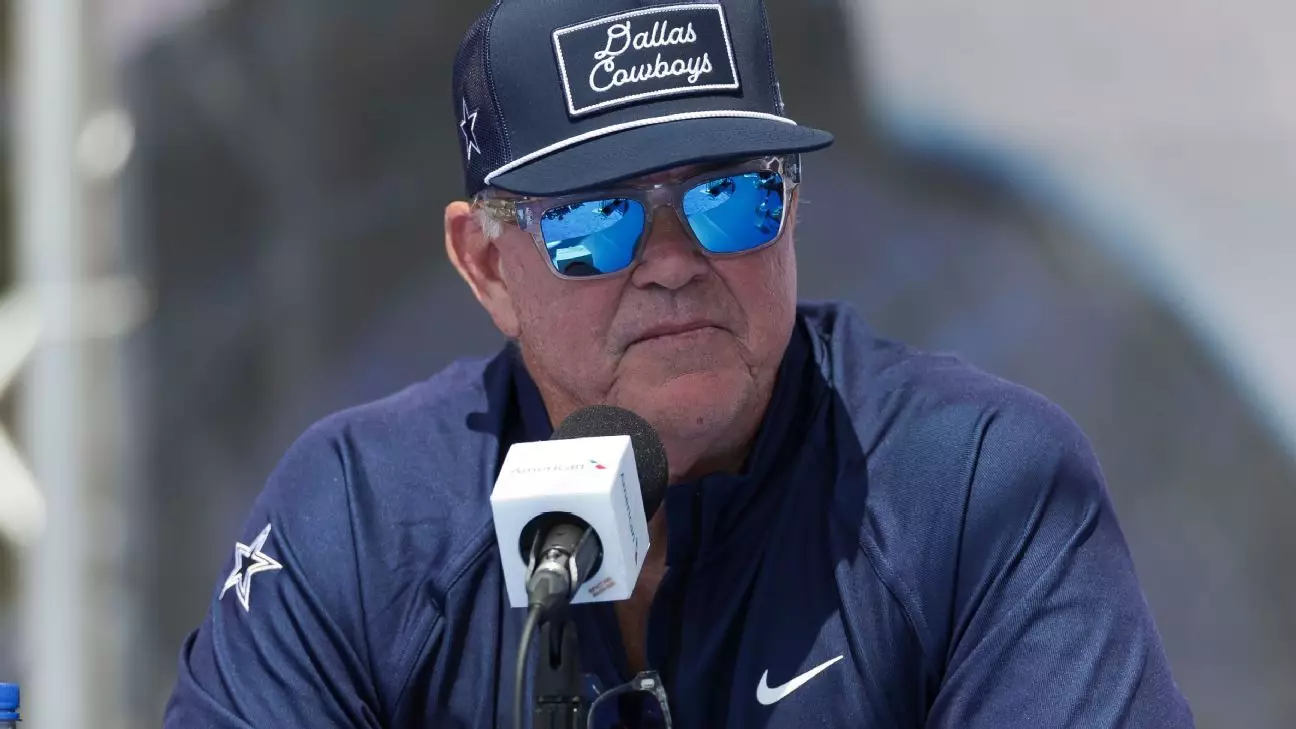As the Dallas Cowboys head into the 2025 offseason, their approach is shifting from last year’s “all-in” mentality to one defined by “selectively aggressive” tactics. This rebranding reflects not just a change in rhetoric but a strategic pivot in how the team under the guidance of executive vice president Stephen Jones intends to enhance its roster. By emphasizing a careful blend of free agency and the draft, the Cowboys aim to make calculated moves that provide them with a competitive advantage without overspending or making rash decisions.
Historically, the Cowboys have favored a strategy of addressing critical needs before the NFL Draft, allowing them to focus on the best player available on their draft board. However, Stephen Jones acknowledged that while this was the goal last year, it wasn’t fully realized. Understanding that each offseason brings different needs and opportunities, the organization plans to assess both their existing roster and the talent available in free agency more carefully. The emphasis on a more thoughtful approach suggests that the Cowboys are looking to strike a balance between immediate needs and long-term planning.
One of the defining narratives of the offseason will undoubtedly center around All-Pro pass rusher Micah Parsons. His potential long-term extension could catapult him into the conversation for the highest-paid defensive player in the league, currently held at $34 million per year. Although conversations have yet to begin with Parsons’ representation, the expectation is that they will unfold soon. Parsons is currently set to earn approximately $21 million on the fifth-year option of his rookie contract, leaving plenty of room for negotiations that could redefine his financial landscape in Dallas.
The Cowboys’ recent history with contract negotiations has been tumultuous at times, as evidenced in the past with key players like CeeDee Lamb and Dak Prescott. While those deals were striking and beneficial for the organization, they were also drawn out during a time when team cohesion could have benefited from more immediate resolutions. Stephen Jones has indicated that while each situation is unique, there may be fewer obstacles in reaching an agreement with Parsons compared to previous negotiations.
Alongside Parsons, discussions have also emerged regarding defensive tackle Osa Odighizuwa’s future with the team. The Cowboys have reportedly engaged in productive talks, though specific details regarding potential franchise or transition tags remain undisclosed. With several soon-to-be free agents, including notable players like DeMarcus Lawrence, the Cowboys front office faces a pressing need to assess their priorities effectively.
Lawrence, who has been a cornerstone of the franchise since being drafted in 2014, could find himself in an interesting position as the longest-tenured Cowboy should he re-sign. However, with retirement waves impacting other key players like Zack Martin, strategizing around the existing payroll becomes imperative. The looming cap penalties could impact the organization’s ability to rebuild or enhance their roster unless adequately navigated.
The financial landscape of the NFL is ripe with nuance, and this year is no different. With projections indicating a rise in the salary cap to between $277.5 million and $281.5 million, the Cowboys are positioned to benefit from increased financial flexibility. This could open doors for trades, new signings, and healthy contract restructurings, particularly for high-impact players like Prescott and Lamb, potentially unlocking up to $57 million in cap room.
Stephen Jones has emphasized the importance of leveraging this newfound flexibility with a mindset of being “selectively aggressive.” This phrase encapsulates the Cowboys’ intent to improve the team by thoroughly evaluating opportunities to enhance their roster without compromising their financial future. The sound management of draft picks, potential trades, and free-agent signings will ultimately dictate how effectively the Cowboys navigate this offseason.
As the Cowboys prepare for the upcoming offseason, the shift toward a “selectively aggressive” strategy signifies not merely a change in tactics but a broader vision for sustained success. By being methodical in their approach—engaging in prudent negotiations, carefully managing their salary cap, and addressing their roster priorities—the Cowboys intend to build a team that can consistently compete for championships.
The offseason landscape is dynamic, and the ability to adapt will be essential for the Cowboys. Fans and analysts alike will be watching closely as the Cowboys endeavor to combine their rich history with modern strategies, keeping the franchise relevant in a fiercely competitive league. Ultimately, the coming months will reveal whether this new philosophy will yield the desired success for America’s Team.


Leave a Reply